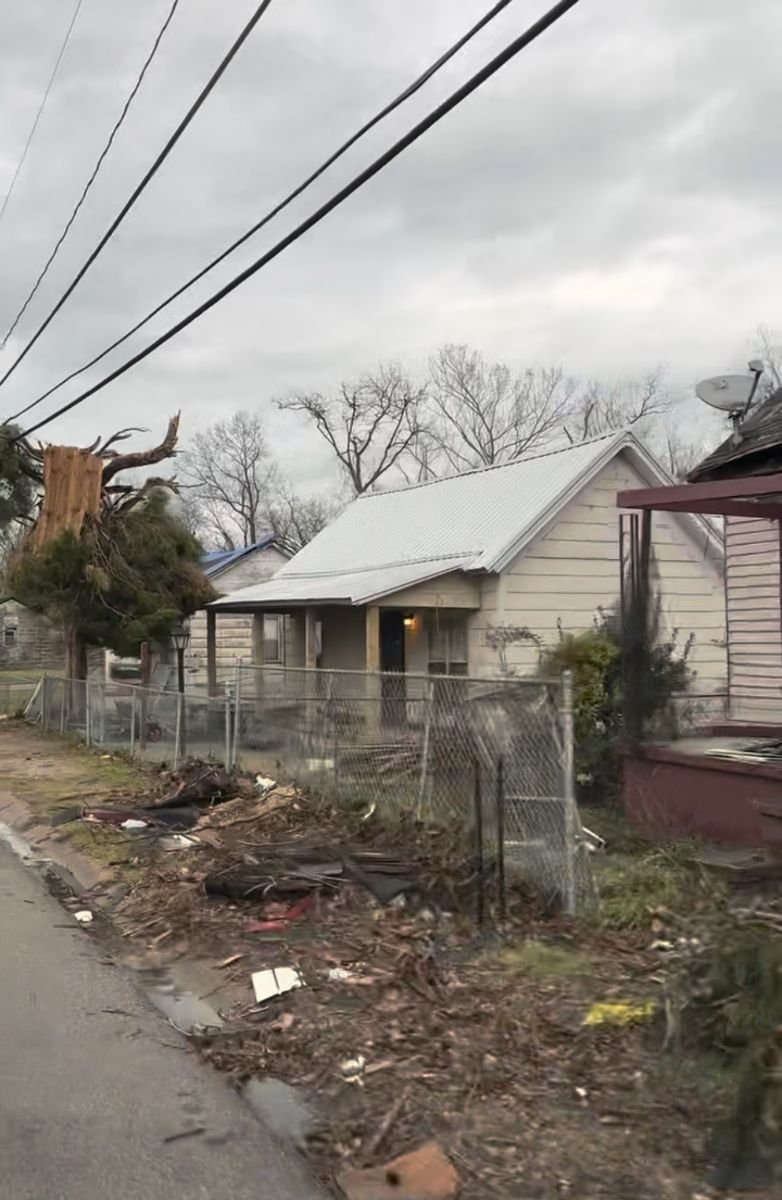Wisdom and resources...
This past week Shawn and I took a little road trip. We flew out to North Carolina to visit some of my family and then drove back taking a tour through some states we haven’t spent much time in. We ended up in Selma Alabama, even though our original plans hadn’t been to go through there. We thought it would be worth going over the Edmund Pettus bridge where the march from Selma to Montgomery started in 1965. We looked up the best BBQ in Selma and discovered it was Lannie’s BBQ, the oldest black owned business in the state. Started in 1944 in a backyard BBQ pit that had grown into a restaurant that was frequented by celebrities, and politicians as well as locals. I was excited to see what had happened to Selma since the days of Martin Luther King Jr galvanizing the local community and how they had grown and flourished because of the sacrifice of all those people almost 60 years ago.
As we approached Selma however, what I had hoped to see was nowhere near the reality. The outskirts were full of abandoned buildings and run-down homes. As we pulled into the town center main street had every other storefront closed and empty. A large National Park Interpretive center sat on the corner of the main street and the road that went over the Edmund Pettus bridge, the only freshly painted well-kept building on the street. We rode over the bridge to find a gas station to fill up before we went searching for Lannie’s BBQ. We stopped at a gas station just the other side of the bridge. Anyone that has seen the movie Selma will recognize the location at the base of the bridge as the location of Bloody Sunday. The first attempt at marching to Montgomery that resulted in police and mounted posse men beating marchers back over the bridge and into the streets of Selma.
Monument in front of Brown Chapel marking MLK and the start of the marches from Selma to Montgomery.
We filled the tank and drove back over the bridge into Selma. The route to Lannie’s, took us past Brown Chapel, the gathering place of Mr. King and his fellow leaders in the civil rights movement as well as the starting point of the eventual march to Montgomery a few weeks after Bloody Sunday. The Chapel was undergoing extensive renovations and not open to the public. What struck me though, was the entire surrounding of the chapel, was government-built housing projects, completed in the 1950s. The projects were still in use today as people were out on their front stoops watching us as we drove past. We turned a few corners and started heading to Lannie’s a few blocks away.
Lannie’s is located in the Tuxedo Junction neighborhood of Selma, a predominantly black neighborhood, although now all of Selma is predominantly black with 84% of the population African American. The population of 29,000 in 1965 which was 50% black and 50% white, has shrunk to just over 17,000 and 84% black. As we drove into the neighborhood, we were shocked. Roofs had been ripped off houses, huge oak trees had been cut up and piled on either side of the road, power and phone lines that had fallen across streets had been pulled back to the side to allow cars to pass. We learned later that a tornado had ripped through Selma about a month earlier in January, but it had never made any news reports that we had heard.
Tornado damage in Selma's Tuxedo Junction neighborhood.
We got to Lannie’s but unfortunately, they were closing early. There was another string of storms predicted to come through that night, and everyone was jittery given their experience a month prior. We were staying in Montgomery so we told the owner who greeted us that we would be back tomorrow.
The next day we decided to drive the actual route from Montgomery to Selma that the marchers took in 1965. It was US highway 80. Halfway along the drive we saw another National Park interpretive center and stopped in to visit. We learned all about the camps the marchers made along the route over the 5 days it took to march the 54 miles from Selma to Montgomery. We learned about the events that led up to the march, and what happened in Montgomery after they got there. It was honestly for me hard to reconcile the sense of purpose, belief in bettering the situation of a people, and passion for the cause that we witnessed in the museum, with the lack of economy, lack of growth, lack of change that we had witnessed in Selma the day before. It was almost as if, the marchers had won their fight for the right to vote, and then Selma was punished physically, economically, and spiritually ever since.
We went back to Lannie’s to have lunch and ended up talking with Mrs. Hatcher, the 90-year-old daughter of the original owners who started the restaurant and her son Quinn. There was one statement that Quinn made when we asked him about Selma and how things were that I think summed up my feelings about what I was witnessing. Quinn was at Bloody Sunday as a 15-year-old and has a scar above his left eyebrow to show for it. Not long after he went into the Marine Corps and was shipped out to Vietnam. When he left Selma in 1969 the streets in his neighborhood, where we were sitting eating BBQ, were dirt. When he came back three years later, they were paved. “And they haven’t been paved since.” He said.
Shawn outside of Lannie's with Quinn.
Even with the effects of a tornado aside, it was plain to see that Selma was run down and left to fend for itself. It reminded me a lot of Portland when we first moved here seven years ago. When a community gets run down for long enough, you can feel it in the atmosphere when you’re there. That’s what Portland felt like seven years ago, and that’s what Selma feels like today. But just like Portland, the people in Selma are resilient and persevering. Seven years ago, in Portland that perseverance took the form of misplaced pride. Pride in how “dangerous” and “bad” the community was. In Selma that resilience and perseverance has taken the form of resignation. The young people want to leave, and the older generation is tired. There are still a few, like Quinn, that will continue to lift their voice to demand what should be, but just like in Portland, without the impartation of knowledge and resources true growth won’t happen. When resources and knowledge are withheld community suffers.
Over the last seven years in Portland we have tried to elevate our neighbors by providing both. The programs at Love City we’ve had over the years have all been designed to give our neighbors the knowledge, wisdom and resources to elevate their community. The changes that we have seen in the neighborhood have shown that those investments in the people are what bring about restoration. It takes neighbors near and far to partner together to share wisdom and resources to see restoration. We’ve seen that restoration start happening in Portland, praying that restoration also starts to happen in Selma.
Lent starts this week...
We will have live music this Friday to kick off the Lent season! Come join us for lunch or dinner, live music starts at 5:30pm!
2519 St Cecilia St
11:00 - 7:30pm
We've started a new semester at Mighty Oak Academy and can always use supplies. If you are interested in helping, please click the link below to either donate, or click here to see our Amazon list for specific supplies that are needed.
If you are interested in volunteering or to find out more information about supplies needed please email: info@lovecityinc.org or call (502) 272-078.






